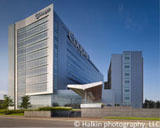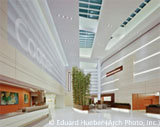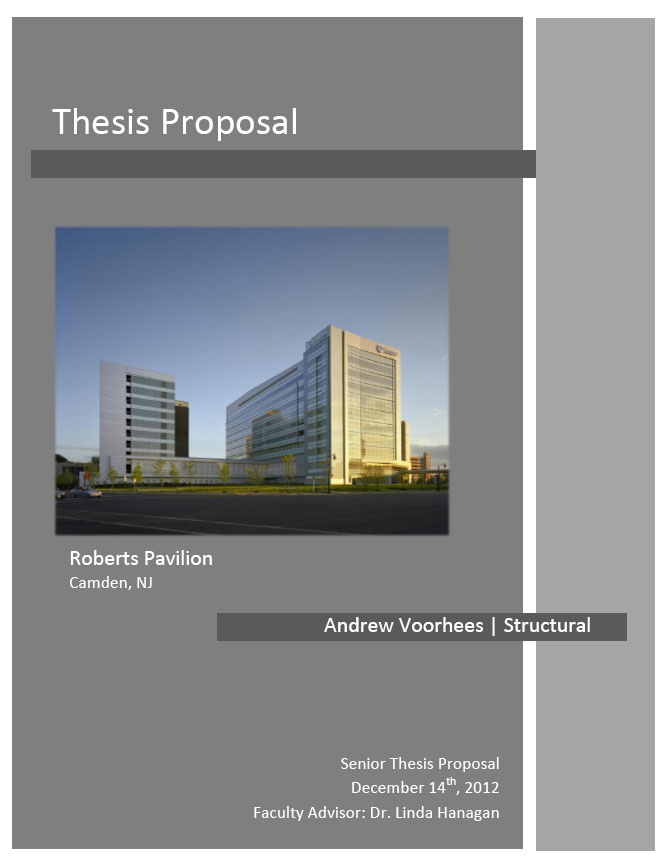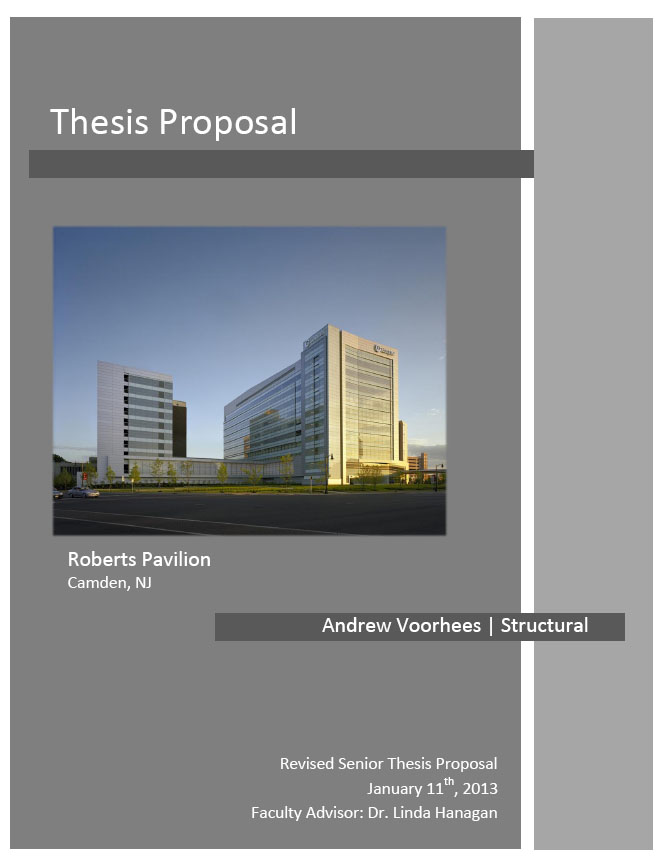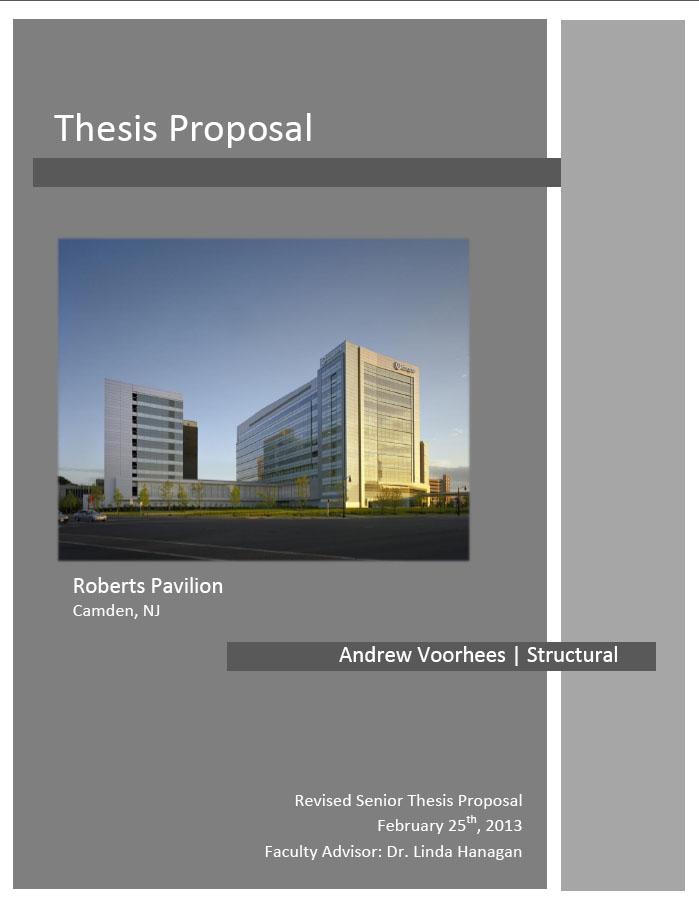Thesis Proposal
Click the thumbnail below to view a PDF of the Proposal
|
Thesis Proposal 12/14/2012 |
Revised Proposal 1/11/2013 |
Revised Proposal 2/25/2013 |
Depth: Reinforced Concrete Design
The proposed depth for this thesis project is to design the Roberts Pavilion with a reinforced concrete structure. This will include the gravity and lateral systems. Systems from Technical Report II will be studied to determine the most economical solution, and then columns, beams, and slabs will be sized, as well as the required reinforcing. The lateral force resisting system will be changed to shear walls and concrete moment frames. Placement of these walls will be chosen based on the least impact on the architecture. Each system will be modeled using ETABS software and verified for adequacy.
Breadth 1: Acoustics
A concrete structure should have better acoustical performance than a steel structure, which is paramount in a hospital. Therefore, each structural system will be studied to determine the noise transmission from mechanical equipment. Particular attention will be focused on the roof level, which currently holds large mechanical equipment. This level, along with a typical patient room on a lower floor will be studied to determine the best way to control noise transmission.
Breadth 2: Schedule and Cost
Changing from a steel structure to concrete will have a large impact on the schedule and cost. A concrete system will hopefully decrease the cost of the building, however, it will increase construction time. This breadth will consider these effects and a schedule will be created to study the effects of a concrete system on the critical path. A cost analysis will also be completed to compare with the cost estimate of the steel system.
MAE Coursework
Graduate level work will be incorporated into this deisgn work particularly from AE 530: Advanced Computer Modeling. The ETABS model will be very important for determining the building's reaction to both gravity and lateral loads. Additional work from AE 538: Earthquake Engineering, will be considered when designing the lateral system.

